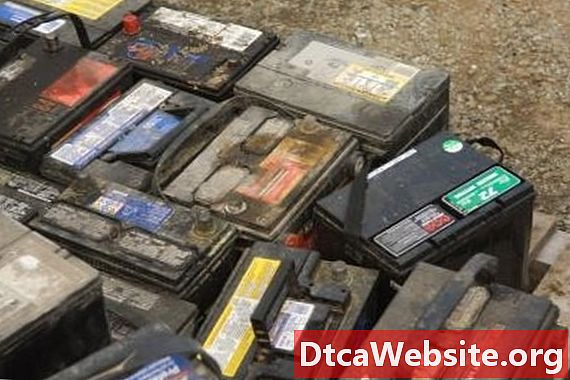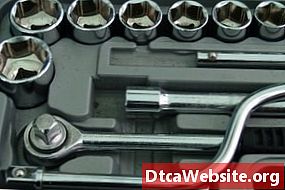
Contenu
A lead acid battery consists of a set of lead electrodes (called plates) immersed in an electrolyte solution of sulfuric acid and water. This technology provides good power storage in a reliable and rechargeable system that is long-lasting and economical. Lead acid batteries are mainly used in cars, motorcycles and recreational vehicles. You can regenerate a malfunctioning lead acid battery provided the problem isnt due to physical damage using several methods. The one described in this article relies on an inexpensive household chemical and requires no special equipment other than a good battery charger.
Step 1
Understand what causes lead acid batteries to fail. When the battery is repeatedly run down (deeply discharged) sulfur collects on the lead plates and blocks the flow of electricity. Called sulfation, this phenomenon is by far the most common problem that occurs with lead acid batteries. Eventually the sulfur will corrode the lead plates beyond repair, but if that has not happened, you can reverse sulfation and regenerate a lead acid battery.
Step 2
Put on gloves and eye protection before you start. Sulfuric acid is corrosive and can cause severe chemical burns. Use a wrench to loosen the battery cables and remove the battery from the vehicle or other device. Work on the battery in a well ventilated area. Keep open flames away from the work area.
Step 3
Remove the cell caps located on the top of the battery and drain the fluid into a non-metallic container. On a sealed battery, locate the "shadow cap" markings and use a drill to open them.
Step 4
Avoid damaging plumbing by neutralizing the old fluid with baking soda. Add 1 tbls. at a time until the fluid no longer bubbles. Flush the drain with water after you pour out the neutralized fluid.
Step 5
Mix about 7 to 8 oz. of magnesium sulfate (sold as Epsom salts) with a quart of warm water (preferably distilled water). Use a funnel to add this solution to each battery cell until full.
Step 6
Place the battery on a "smart" charger (a 3-phase battery charger) according to the manufacturers instructions. Make sure the positive and negative leads are connected to the correct battery terminals and set the charger to the voltage for your battery, and then turn the charger on.
Charge the battery overnight. When its fully charged, turn the charger off, disconnect the battery and replace the cell caps. You can buy plastic plugs to close the cells on a sealed battery at an auto parts store. Reinstall the battery in the vehicle. It should now function normally.
Tips
- For best results, put the battery on the charger again in a few days and bring it to full charge. Repeat two or three times to make sure all the sulfur is removed from the plates.
- Placing a lead acid battery on a slow (trickle) charger when stored for long periods will prevent a deep discharge ad further sulfation.
Items you will need
- Magnesium sulfate
- Baking soda
- Cell plugs
- Wrench
- Funnel
- 3-phase battery charger
- Drill
- Protective gloves
- Eye protection


